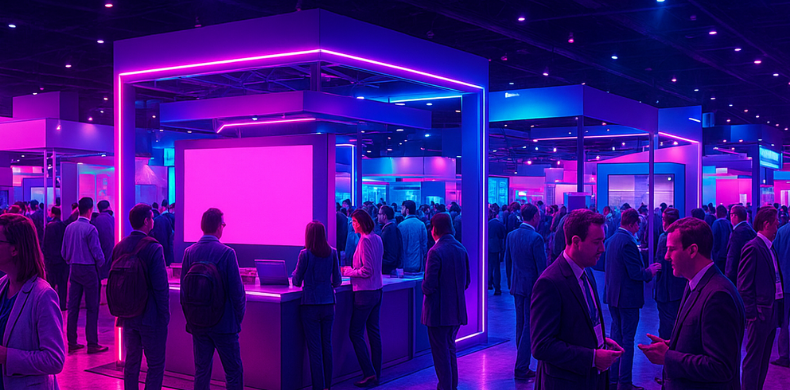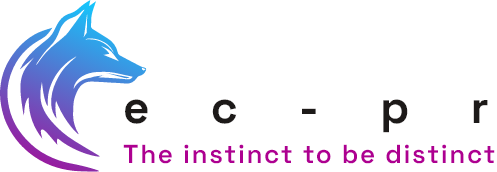
Why blending in at trade shows is costing you credibility
Day two of your industry’s biggest trade show. You have invested five figures in your stand, flown in your technical team and spent months perfecting the product demonstration. As you watch from across the hall, journalists walk straight past your competitors’ stands without stopping. The teams behind those expensive displays look like they would rather be back at their desks. Your stand is considerably busier, but will anyone remember your company once they leave the exhibition hall?
Events, including trade shows, saw the highest UK marketing spend growth in 2024/25 at +12.3%. It’s where everyone fights for the same eyeballs, journalists and decision-makers. However, most companies think the biggest risk is not showing up.
Let us tell you why the real risk is blending in.
The cost of being forgettable
Blending in comes at a commercial cost – dwindling awareness, weakened credibility and fewer networking opportunities. When you become part of the backdrop, you lose immediate opportunities and fail to build the third-party validation that buyers look for.
Walk any exhibition floor, and the pattern repeats, impressive square footage filled with teams that panic when journalists approach. Staff are glued to their laptops, not looking up. Journalists simply walk straight past if there is no one at their stand or they don’t look like they want to talk to anyone.
This is not a design problem, nor is it a budget issue. It is a strategic failure to understand what creates lasting impact.
What standout brands understand differently
Our work with BMT Group at DSEI 2023 created a conversation about the transition to naval autonomy, giving journalists a reason to stop, listen and engage with a global challenge. The result was four front covers, six headline features and coverage in every tier-one defence outlet we targeted.
The difference was that their people looked like they wanted to talk and had been briefed correctly. They provided valuable background context, clearly stating this was not for direct quotation, but to help understand the full picture. The team treated journalists as collaborators, not risks.
Standing out requires thought and planning that extends far beyond stand design. It means understanding that when a journalist or an editor includes your information in their publication, it is a sign that they are endorsing you as a third party. They think you are worth having in their media, and your opinion is worth sharing with their audience.
The strategic shift that changes everything
The brands that generate lasting impact plan influence and not just the event itself. From our perspective, the groundwork should start at least 12 weeks out.
Three actions separate memorable brands from forgettable ones.
- Brief your people to engage journalists as industry experts, not company representatives.
- Lead with the problems you solve, not the products you sell.
- Start building relationships and positioning your narrative months before the doors open.
Your visibility needs to live on. You need to amplify it through all your content, far beyond the exhibition floor. You need to follow up with the journalist contacts you’ve made, building on those stories and relationships.
Your exhibition investment shouldn’t just put you in the room.
It should make you the voice that shapes industry conversation long after everyone returns home.
Watch our complete webinar “Get more bang for your marcoms buck” where Lorraine, Liz and defence journalist, Alix Valenti, reveal how to turn exhibition spend into lasting brand authority.
How to become a thought leader
BEACON B2B PR Guide
Essential advice and tactics on how to do B2B Tech PR thought leadership.
Subscribe to our updates
Stay up to date with the latest insights, case studies and PR guides.

